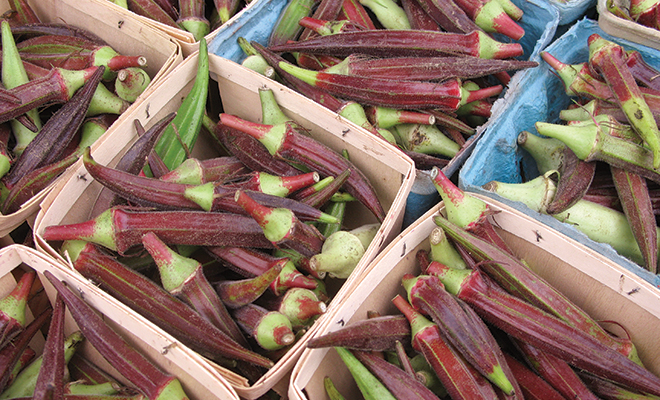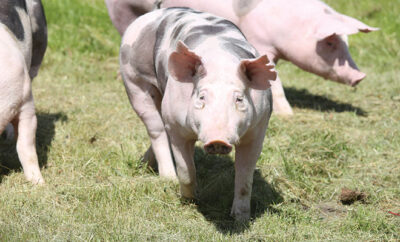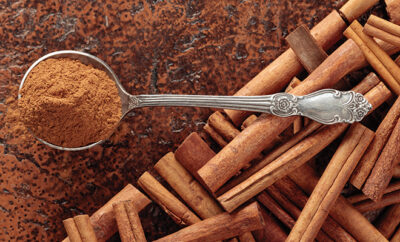
The Culinary Color Purple
My prowess as a gardener is somewhat limited. Luckily, my yard is filled with perennials that require very little maintenance. But I like to fill in the blank spots with flowers, vegetables and herbs. Even the smallest kitchen garden offers home cooks the option of fresh-picked produce.
Afew years ago, I took a chance on an unlikely find at the nursery: purple okra. I was taken by the color of the plant. The maroon stalk would stand out from the greenery in the garden. I had never cooked okra, but I started looking for ways to use it.
I discovered four things about purple okra. First, the lovely yellow blooms looked like miniature hibiscus, producing gorgeous flowers that lasted just one day. Second, okra grows really fast! Third, the best way to enjoy purple okra is to pick it while it’s small and serve it uncooked, dressed with olive oil, salt and pepper. Fourth, if it grows past maturity, okra is too tough to eat, but the purple pod adds beautiful height to a vase of summer flowers.
I was so taken with purple okra that I found myself noticing the color purple in food everywhere. I fell prey to Baader-Meinhof syndrome. Never heard of that? No worries; you will soon. This describes the effect of selective attention. When you’re struck by something new and start seeking it out, you suddenly see it everywhere. When this happens, it seems like more than coincidence. This seeming conspiracy is also referred to as “frequency illusion.”
I digress. Having discovered purple okra, I was suddenly hyper-aware of other purple foods. I saw purple cabbage and purple asparagus for the first time. When I fermented vegetables, I started a jar of sliced veggies including cabbage, onion and carrots, including a few purple carrots. I was fascinated to see that the purple carrots imparted a delicate rose hue to all the vegetables as they fermented. This led me to wonder, what is IN this purple stuff? Does it have a purpose, and if so, what does it provide?
Most of us know that a healthy diet includes a rainbow of colors of food. Green leafy vegetables provide vitamins A, C and K. Orange and yellow fruits and vegetables also have carotenoids, which is a flavonoid, a group of phytonutrients known to give food a vivid color. Carotenoids boost immune function and help your body metabolize vitamin A. Perhaps the best-known vegetable with carotenoids is the carrot.
Let’s look at carrots. You probably think of carrots as the orange vegetable found in the produce section. But did you know that carrots were originally purple in color? Carrots were grown in the region now known as Afghanistan. For centuries, it was a purple vegetable, although there were a few white and orange variations. Hundreds of years later, Dutch farmers in the 17th century developed hybrid carrots that were orange in color. Their selling point was that they tasted better; orange carrots were sweeter than the traditional purple vegetable. Ironically, we now think of orange carrots as being the norm, and purple carrots as the variation.
We know that purple foods contain a flavonoid called anthocyanin. This flavonoid is found in berries and in purple vegetables such as cauliflower, asparagus, eggplant and potatoes. Anthocyanin is believed to have anti-inflammatory properties that can defend your body against asthma, allergies, joint diseases, heart disease, depression and obesity. However, it’s difficult to prove whether this benefit occurs on its own, or if it works best in combination with other beneficial foods. It’s not possible to measure how these flavonoids break down in the body’s metabolism during digestion. But lab studies demonstrate the benefits of anthocyanin in battling cardiovascular disease and inhibiting the growth of cancer cells.
Even though a diet with plenty of fruits and vegetables provides antioxidant benefits, beware of taking supplements. High doses of antioxidant supplements can interact with some medications, or put you at risk for some diseases.
Have you noticed a lot of purple clothing and decor this year? There’s that Baader-Meinhof syndrome again. You can thank Pantone, the global company that matches color tones for consistency. Their fan book of color swatches is used by designers, printers, paint companies and other industries. This year, Pantone announced “Ultra Violet” as the Color of the Year. The exact hue of purple is Pantone 18-3838.
Each year, designers incorporate the color of the year into merchandise such as cosmetics, fashion and bedding. Coincidentally, this year the French cookware line Le Creuset announced its newest color, “Provence,” an ombre purple very close to Pantone 18-3838. It evokes colors found in lavender fields.
If purple is your passion, this is the year to enjoy all of its hues in food and cookware, marrying form and function. ■
Sources: foodrevolution.org, medlineplus.gov, livescience.com, ncbi.nlm.nih.gov, lecreuset.com, pantone.com and foodrevolution.org.







